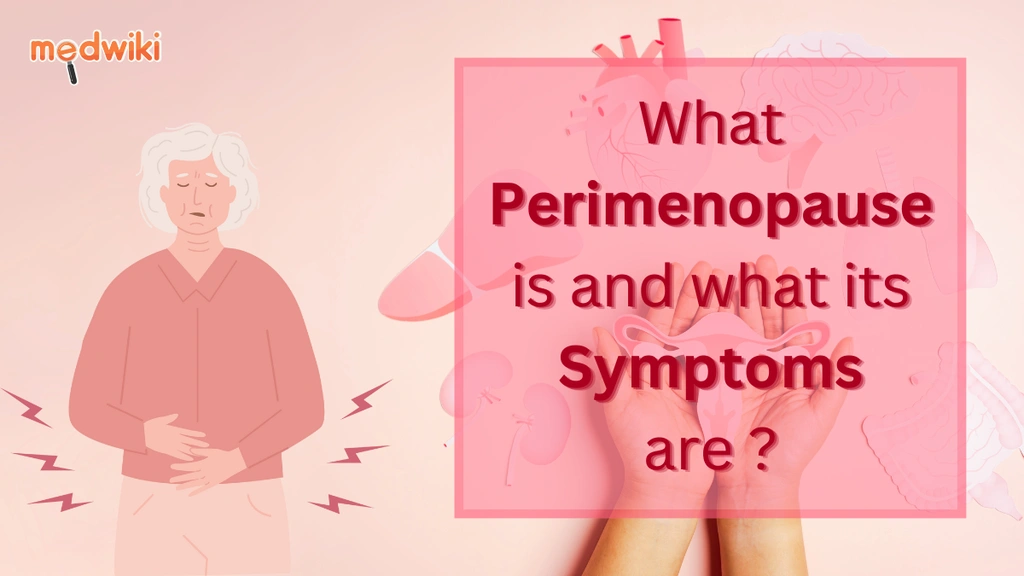benzydol
Introduction to Benzydol:
Benzydol is a medication primarily used in the treatment of various psychiatric disorders. It is known for its effectiveness in managing symptoms associated with conditions like schizophrenia, acute psychosis, and Tourette syndrome. The active ingredient in Benzydol is Haloperidol, a well-established antipsychotic medication. Available in multiple forms such as tablets, injections, and syrup, Benzydol provides flexibility in administration to suit patient needs. This medication is often prescribed by healthcare professionals to help stabilize mood and improve mental health conditions.
Composition of Benzydol:
The primary active ingredient in Benzydol is Haloperidol, present at a concentration of 5mg. Haloperidol belongs to a class of medications known as antipsychotics. It works by blocking certain neurotransmitters in the brain, particularly dopamine, which plays a key role in mood regulation and behavior. By modulating dopamine activity, Haloperidol helps to reduce symptoms such as hallucinations, delusions, and agitation, promoting a more balanced mental state.
Uses for Benzydol:
- Treatment of schizophrenia
- Management of acute psychosis
- Control of Tourette syndrome symptoms
- Reduction of severe behavioral problems in children
- Management of severe nausea and vomiting
Side Effects of Benzydol:
- Drowsiness or dizziness
- Dry mouth
- Constipation
- Blurred vision
- Muscle stiffness or tremors
- Weight gain
- Restlessness
- Changes in menstrual cycles
Precautions for Benzydol:
Before starting Benzydol, it is important to inform your healthcare provider of any allergies, medical history, or current medications. Caution is advised when using this medication in elderly patients, particularly those with dementia-related conditions, as it may increase the risk of serious side effects. Avoid alcohol and other central nervous system depressants while taking Benzydol, as they can enhance drowsiness. Pregnant or breastfeeding women should discuss potential risks and benefits with their doctor. Regular monitoring by a healthcare professional is recommended to ensure the safe and effective use of Benzydol.
Available Forms of Benzydol:
Benzydol is available in several forms to accommodate different patient needs:
- Tablets: Typically prescribed for daily use to manage chronic conditions.
- Injections: Used in acute settings for rapid symptom control.
- Syrup: An option for patients who have difficulty swallowing tablets.
Conclusion:
Benzydol, with its active ingredient Haloperidol, is a versatile medication used in the management of various psychiatric disorders. Available in tablets, injections, and syrup, it provides multiple options for treatment. While effective, it is important to use Benzydol under the guidance of a healthcare professional to minimize side effects and ensure optimal results. Always discuss any concerns or questions with your doctor to ensure safe and effective use of this medication.
Similar Medicines
Available in 3 variations

Benzydol P 5mg Tablet
Benzydol P 5mg Tablet
strip of 10 tablets

Benzydol P 1.5mg Tablet
Benzydol P 1.5mg Tablet
strip of 10 tablets

Benzydol P 10mg Tablet
Benzydol P 10mg Tablet
strip of 10 tablets
Related Faqs

Does Halidol cause respiratory depression/ hallucination?
Halidol also known as haloperidol is a medication that has the potential to induce dyspnea a difficulty in breathing among patients In addition to this adverse effect it can also lead to various behavioral abnormalities However it is important to note that Halidol is not generally associated with the occurrence of respiratory depression or hallucinations in individuals who take it Dyspnea as a side effect of Halidol may manifest as a sensation of breathlessness or labored breathing It is crucial for medical professionals to monitor patients closely for any signs or symptoms of this condition as it could potentially be an indication of a severe allergic reaction or other serious underlying health issues Prompt medical attention should be sought if dyspnea occurs while taking this medication While Halidol can cause behavioral abnormalities such as agitation restlessness or confusion it is not typically linked to respiratory depression Respiratory depression refers to a decrease in the rate or depth of breathing which can lead to inadequate oxygenation of the blood Similarly hallucinations which involve perceiving things that are not actually present are not commonly associated with the use of Halidol As with any medication it is essential to consult with a healthcare professional about the potential risks and benefits of Halidol before starting or modifying its use This will help ensure that the treatment plan is tailored to the specific needs and medical history of the individual patient

Is Benzydol P a sedative/ make you sleepy?
Yes Benzydol P has the potential to induce sedation This medication contains certain active ingredients that possess sedative properties which can result in drowsiness or sleepiness It is important to exercise caution when using Benzydol P especially if engaging in activities that require alertness such as driving or operating machinery It is advised to avoid consuming alcohol or other medications that can further enhance sedation when taking Benzydol P Additionally it is recommended to start with a lower dosage or seek medical advice if you are sensitive to sedative effects It is essential to prioritize your safety and wellbeing when using this medication Consult with a healthcare professional for personalized guidance and adhere to the prescribed dosage to minimize the likelihood of experiencing excessive sedation as a side effect

Is Cizonil a sedative/ make you sleepy?
Cizonil an antianxiety medication has the potential to induce sedation as one of its side effects Sedation refers to a state of calmness relaxation and drowsiness that can be experienced after taking this medication While the primary purpose of Cizonil is to alleviate anxiety symptoms it is important to note that sedation can occur as a result of its pharmacological action on the central nervous system This effect is particularly notable when Cizonil is taken in higher doses or combined with other substances that have sedative properties such as alcohol or certain pain medications The sedative effect of Cizonil can vary from person to person with some individuals experiencing mild drowsiness while others may feel significantly more sedated It is essential for individuals taking Cizonil to be cautious when engaging in activities that require alertness such as driving or operating heavy machinery as sedation can impair their ability to perform these tasks safely It is advisable to follow the prescribed dosage and consult with a healthcare professional if sedation persists or becomes excessive

Is Cizonil a benzo or a neuroleptic or MAOI?
No Cizonil does not belong to the category of benzodiazepines benzos monoamine oxidase inhibitors MAOIs or neuroleptics It specifically falls under the classification of antipsychotics Its mechanism of action involves blocking the activity of dopamine receptors in the brain This blockade effectively reduces the hyperactivity of dopamine in the brain resulting in therapeutic effects for certain psychiatric conditions By inhibiting the action of dopamine Cizonil helps regulate and manage symptoms associated with psychosis and related mental disorders Despite its distinct classification as an antipsychotic Cizonil does not possess the sedative properties of benzodiazepines or the monoamineoxidase inhibiting effects of MAOIs Instead its primary mode of action centers around the modulation of dopamine function in the brain This unique mechanism is what sets Cizonil apart from other classes of medications commonly used in the treatment of various mental illnesses Therefore when considering treatment options for psychotic disorders Cizonil may be prescribed by healthcare professionals to provide relief to patients experiencing excessive dopamine activity in the brain

Is Opedol a benzo or a neuroleptic or MAOI?
No Opedol is not classified as a benzodiazepine a monoamine oxidase inhibitor MAOI or a neuroleptic Instead it falls under the category of antipsychotic medications Its mechanism of action involves the blocking of dopamine receptors in the brain thereby reducing the excessive dopamine activity that occurs By modulating this neurotransmitter Opedol aims to alleviate symptoms associated with psychotic disorders such as schizophrenia Unlike benzodiazepines which act primarily on the gammaaminobutyric acid GABA system Opedol targets the dopaminergic system Similarly it differs from monoamine oxidase inhibitors which primarily affect the breakdown of neurotransmitters like dopamine serotonin and norepinephrine Furthermore Opedol is not classified as a neuroleptic which is a term used to describe a broader category of antipsychotic medications Instead it is specifically categorized as an antipsychotic due to its selective action on dopamine receptors in the brain By clarifying these distinctions we can better understand the unique role of Opedol in the treatment of various psychiatric conditions

Is Estidol a sedative/ make you sleepy?
Estidol a medication known for its sedative properties has the potential to induce sedation in individuals who take it This sedative effect is a common side effect of Estidol and can be beneficial in certain medical situations such as when immediate relaxation and calmness are necessary However it is important to note that the degree of sedation experienced may vary from person to person depending on factors such as dosage overall health and individual sensitivity to the drug Although sedation can be helpful in specific circumstances there are potential drawbacks to consider Excessive sedation caused by Estidol can impair an individuals ability to perform daily activities operate machinery or drive a vehicle safely Therefore it is strongly advised that individuals taking Estidol refrain from engaging in such activities until they have a clear understanding of how the medication affects them personally Additionally it is crucial to follow the prescribed dosage and usage instructions provided by a healthcare professional Taking Estidol in larger amounts or for longer durations than recommended can lead to an intensified sedative effect or other adverse reactions It is essential to communicate any concerns or unexpected side effects to a healthcare provider to ensure appropriate adjustments to the treatment plan In summary while Estidol can cause sedation as a common side effect it is important for individuals to be aware of the potential risks and benefits associated with its use Proper communication with a healthcare provider adherence to dosage instructions and caution when performing activities that require alertness are essential to ensure the safe and effective use of Estidol
Related Posts

1:15
What are the Types of Hallucinations?

1:15
Symptoms of Emotional Hangover!| How to Fix Emotional Hangover?

1:15
Dyslexia Symptoms & Diagnosis – Know the Signs!

1:15
Dyslexia: What is it, how does it occur and how dangerous is it!

1:15
How to Take Control of Perimenopause: Home Remedies You Need to Know!

1:15
How Does Guillain-Barre Syndrome Start? Symptoms, Causes, and Treatment!

1:15
How to Get Glowing Skin Naturally | Easy Skincare Tips!
Disclaimer : This information is not a substitute for medical advice. Consult your healthcare provider before making any changes to your treatment . Do not ignore or delay professional medical advice based on anything you have seen or read on Medwiki.
benzydol
Prescription Required
Manufacturer :
La PharmaceuticalsComposition :
haloperidol
















.svg)
